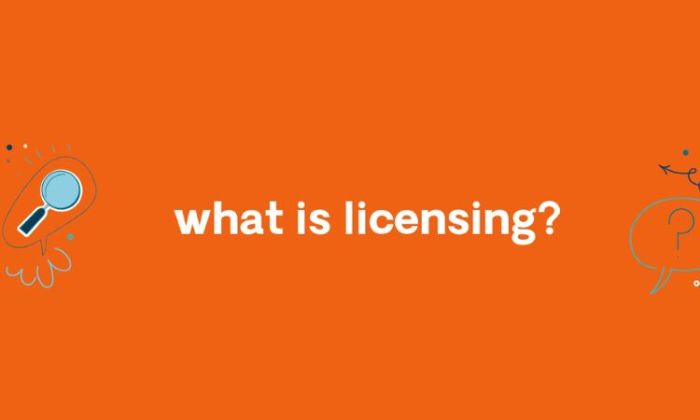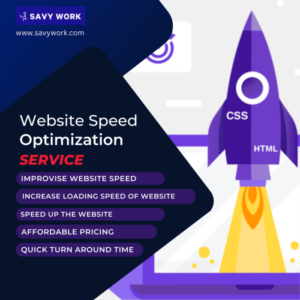
Content licensing for video streaming is a vital aspect of today’s digital landscape, ensuring that creators and platforms can share media legally and ethically. As the demand for video content continues to soar, understanding the intricacies of licensing becomes increasingly crucial for both producers and consumers alike.
This topic encompasses various types of licenses, the legal ramifications of using unlicensed content, and the best practices for acquiring these licenses to avoid potential pitfalls. With the right approach, video streaming platforms can enhance user experience while respecting creators’ rights.
Understanding Content Licensing

Content licensing is a crucial aspect of video streaming platforms, as it governs the legal use of video content. Proper licensing ensures that creators and service providers can legally distribute films, shows, and other media, which ultimately supports the industry’s sustainability and protects intellectual property rights. Without adherence to licensing agreements, platforms may face legal disputes and financial penalties.In the world of video streaming, there are various types of content licenses available, each serving a specific purpose.
Understanding these licenses is vital for anyone involved in content distribution. Here are the primary types of content licenses:
Types of Content Licenses for Video Streaming
When selecting a content license, it’s important to consider the nature of the content and the intended use. The following license types are commonly utilized:
- Exclusive License: This license grants the licensee exclusive rights to use the content, meaning no other party can use it during the license term. This is particularly valuable for original productions or high-demand content.
- Non-Exclusive License: In contrast, a non-exclusive license allows multiple licensees to use the same content. This type is often utilized for older films or shows, allowing wider distribution.
- Synchronous License: This license permits the use of music in conjunction with visual media, often seen in films or video games where music enhances the viewing experience.
- Sync License: This license applies specifically to the use of music in video content, allowing the music to be synchronized with visual elements.
- Public Domain License: Content that is in the public domain can be used without a license. Works may enter the public domain after a certain period or due to the creator’s decision.
Each type of license has legal implications, particularly concerning the consequences of using unlicensed content in video streaming. Engaging with unlicensed content can lead to severe repercussions, including financial penalties and legal action.
Legal Implications of Using Unlicensed Content
Using content without the appropriate licenses not only violates copyright laws but also undermines the entire creative industry. The following legal implications arise from the use of unlicensed content:
- Copyright Infringement: Unauthorized use of copyrighted material can lead to significant legal action, including lawsuits. Copyright holders have the right to take legal action against infringers.
- Financial Penalties: Companies found using unlicensed content may be required to pay damages, which can be substantial depending on the extent of the infringement.
- Reputation Damage: Engaging in copyright violations can tarnish a company’s reputation, leading to a loss of trust from consumers and partners.
- Content Removal: Platforms may be forced to remove unlicensed content upon receiving takedown notices, disrupting service and potentially causing revenue loss.
“Proper licensing is not just a legal requirement; it is fundamental to fostering creativity and innovation in the video streaming industry.”
Awareness of content licensing is essential for all stakeholders in video streaming, ensuring compliance and respect for creative works while promoting a sustainable ecosystem for media distribution.
Best Practices for Content Licensing
Acquiring content licenses for video streaming is a critical step for any platform looking to offer a diverse and engaging library. Understanding the intricacies of licensing agreements ensures that platforms can operate smoothly while respecting copyright laws.Navigating the content licensing landscape can be complex, but following established best practices can streamline the process and reduce the risk of legal issues.
Here are key practices to consider when acquiring content licenses for video streaming.
Steps for Acquiring Content Licenses
When seeking to acquire content licenses, it’s essential to approach the process methodically. The following steps provide a framework for effective licensing:
- Identify Content Needs: Clearly define what type of content you need, including genre, length, and target audience.
- Research Potential Licensors: Investigate companies or individuals who own the rights to the content, ensuring they are reputable.
- Negotiate Terms: Discuss pricing, duration of the license, geographic restrictions, and usage rights.
- Review Legal Requirements: Ensure compliance with copyright laws and any industry-specific regulations.
- Document Agreements: Formalize the licensing agreement with a written contract that Artikels all terms and conditions.
Ensuring Compliance with Licensing Agreements
To maintain good standing and protect your platform from legal repercussions, compliance with licensing agreements is non-negotiable. Consider the following steps:
- Regular Audits: Conduct periodic reviews of your content library to ensure that all materials are properly licensed.
- Monitor Usage: Track how and where content is being distributed to stay within the agreed terms.
- Maintain Good Relationships: Foster positive interactions with content owners to facilitate easier renewals or adjustments in the future.
- Stay Updated: Keep abreast of changes in licensing laws and industry practices to ensure ongoing compliance.
Role of Legal Counsel in Content Licensing
Engaging legal counsel plays a vital role in navigating the complexities of content licensing for video platforms. Their expertise ensures that your platform is protected and compliant.
Legal counsel can help interpret contract language, identify potential pitfalls, and advise on negotiations to secure favorable terms.
Legal professionals can also assist in drafting and reviewing contracts, ensuring that all aspects of the agreement are in your best interest. Their experience in intellectual property law provides invaluable insight, particularly in managing disputes or addressing breaches of contract.In conclusion, adopting best practices in content licensing not only safeguards your platform but also enhances its reputation and operational efficiency in the video streaming marketplace.
Impact of Content Licensing on Video Marketing

The world of video marketing has been significantly transformed by the advent of content licensing. By acquiring the rights to utilize existing content, brands can create more engaging and relevant video marketing strategies. This not only allows businesses to tap into pre-established audiences but also enhances the perceived value of their own content by associating it with well-known properties or creators.Content licensing directly influences video marketing strategies by providing a broader range of material to work with.
This can include licensed clips, music, or full-length features that resonate with target audiences. By integrating licensed content, marketers can enhance storytelling, increase brand visibility, and create memorable experiences that drive viewer engagement.
Enhancing Viewer Engagement with Licensed Content
Leveraging licensed content effectively can lead to increased viewer engagement in multiple ways. The following methods highlight how brands can capitalize on licensed content to create compelling marketing campaigns:
Brand Alignment with Popular Content
Associating a brand with popular shows, films, or music can attract viewers who have an emotional connection with that content. For instance, a fitness brand might use clips from a popular workout show to promote their latest equipment, appealing to the show’s audience.
Incorporating User-Generated Content
Brands can encourage their audiences to create content that involves licensed material. For example, a movie studio could run a contest where fans create trailers using clips from their films, generating buzz and engagement while highlighting the licensed content.
Creating Themed Campaigns
Licensed content can be the backbone of thematic marketing campaigns. For instance, a clothing brand might launch a collection inspired by a licensed animated series, using clips from the series in their promotional videos to draw in fans and bolster sales.A strategic approach in measuring the effectiveness of licensed content is crucial for video marketing success. Here are key metrics to consider when assessing the impact of licensed content in marketing campaigns:
Engagement Rates
Monitoring likes, shares, comments, and overall interactions on videos featuring licensed content can provide insights into audience reactions and preferences.
View Duration
Analyzing how long viewers watch licensed content can indicate its relevance and interest level. Higher view duration often correlates with effective engagement strategies.
Brand Recall and Recognition
Surveys or post-campaign assessments can gauge whether audiences remember the brand after engaging with licensed content, which is essential for measuring brand impact.
Conversion Rates
Tracking how licensed content influences sales or leads provides concrete evidence of its effectiveness in driving desired actions from viewers.By focusing on these metrics, marketers can refine their strategies and ensure that licensed content not only complements their brand but also delivers tangible results.
Closure
In conclusion, navigating the world of content licensing for video streaming may seem complex, but with the right strategies and understanding, it can lead to significant benefits for both content creators and streaming platforms. By adhering to best practices and leveraging licensed content effectively, businesses can foster a more engaging environment for viewers while maintaining compliance with legal standards.
Question & Answer Hub
What is content licensing?
Content licensing refers to the legal permission granted to use specific content, such as videos or music, under defined terms and conditions.
Why is content licensing important for video streaming?
It ensures that content creators are compensated for their work and protects streaming platforms from legal issues related to copyright infringement.
What are the types of content licenses available?
Common types include exclusive licenses, non-exclusive licenses, and royalty-free licenses, each with different usage rights and restrictions.
How can I ensure compliance with licensing agreements?
By thoroughly understanding the terms of the agreement, maintaining accurate records, and consulting with legal counsel when necessary.
What are the consequences of using unlicensed content?
Using unlicensed content can lead to legal repercussions, including fines, lawsuits, and damage to reputation.





